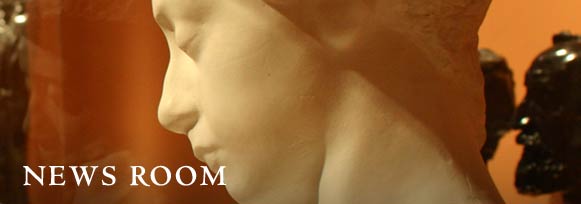Memory and Markets: Pueblo Painting in the Early 20th Century
Exhibition Spotlights a Unique Development in Native American Art History with Works from Three Collections
February 22 – May 27, 2012
Stanford, California — A new movement of Native American painting emerged in the Pueblo communities of the southwestern United States in the early 20th century. Encouraged by anthropologists and teachers to record past and current scenes of their daily life on paper, the artists found inspiration in the centuries-old tradition of Pueblo painting seen in pottery, murals and archaeological remains.
The earliest Pueblo artists were self-taught, and they struggled for recognition from the local and national art market. In the 1930s, the formation of the Studio at the Santa Fe Indian School formalized the training of generations of Native painters and secured the continuance and expansion of this new tradition of Native American easel painting. The resulting works were dynamic, colorful and decidedly modern.
“Memory and Markets: Pueblo Painting in the Early 20th Century,” at the Cantor Arts Center from February 22 through May 27, outlines the history of this development. This exhibition includes works by well-known artists such as Tonita Peña (Quah Ah) and Alfonso Roybal (Awa Tsireh), both from the San Ildefonso Pueblo. Recent gifts from the collection of Malcolm and Karen Whyte and four important loans from the California Academy of Sciences in San Francisco, including a painting by Allan Houser, augment highlights from the Center’s collection. “Memory and Markets” presents nearly 20 paintings in the Lynn Krywick Gibbons Gallery plus a small selection of pottery exemplifying early painting traditions.
The exhibition coincides with Stanford’s 41st annual Powwow, hosted Mother’s Day weekend, May 11–13, 2012, by the Stanford American Indian Organization. Learn more about Powwow details.
The exhibition is made possible by the Lynn Krywick Gibbons Exhibitions Fund.
# # #
VISITOR INFORMATION: Cantor Arts Center is open Wednesday – Sunday, 11 am - 5 pm, Thursday until 8 pm. Admission is free. The Center is located on the Stanford campus, off Palm Drive at Museum Way. Parking is free after 4 pm weekdays and all day on weekends. Information: 650-723-4177, museum.stanford.edu.
PUBLICITY PHOTOS: For high-resolution images, contact PR Assistant Manager, Margaret Whitehorn: 650-724-3600, mmwhite@stanford.edu

Thomas Vigil (Pan Yo Pin)
Hopi Snake Dancers, c. 1930. Watercolor over pencil. Stanford Museum Collection, JLS.4447

Gilbert Benjamin Atencio (Wah Peen), San Ildefonso Pueblo, Dancers, 1950. Gouache. Cantor Arts Center, Gift of Malcolm and Karen Whyte, 2009.80



